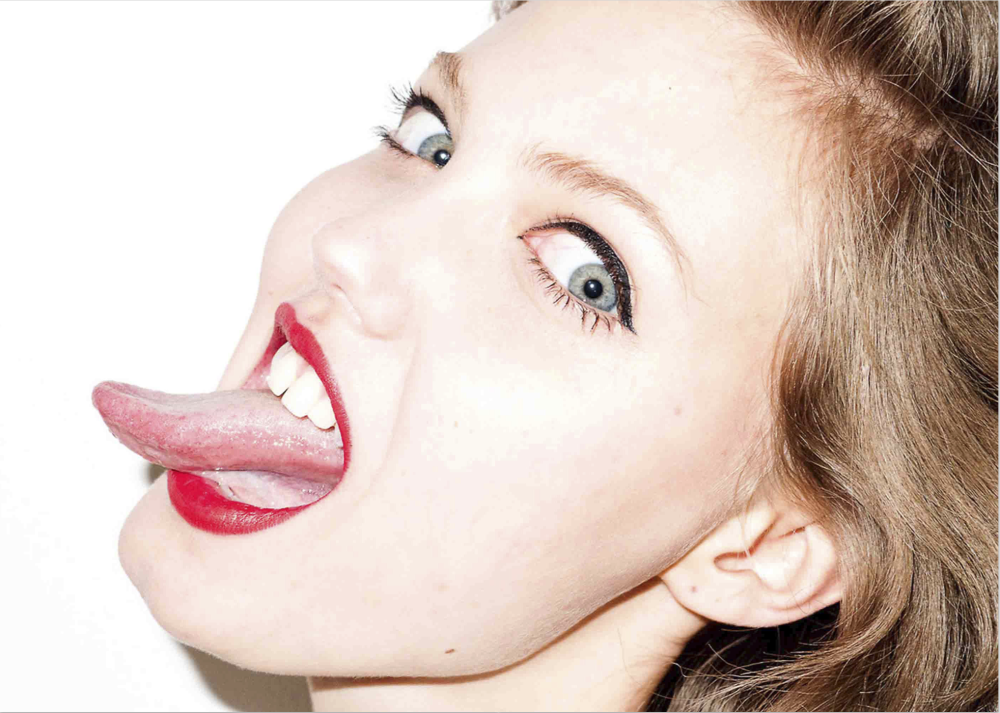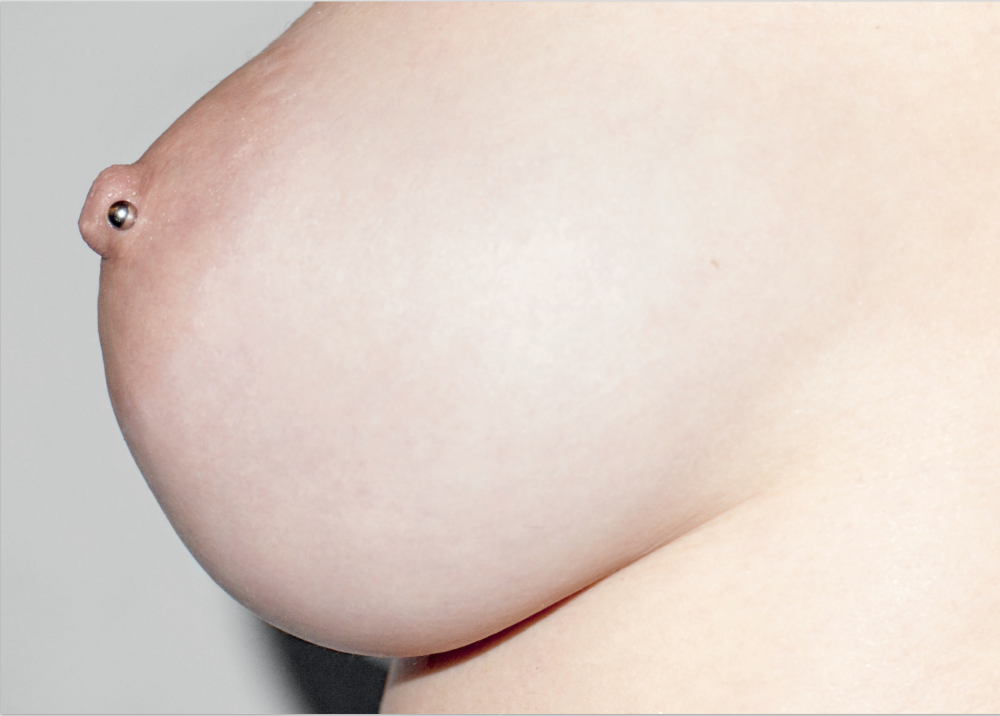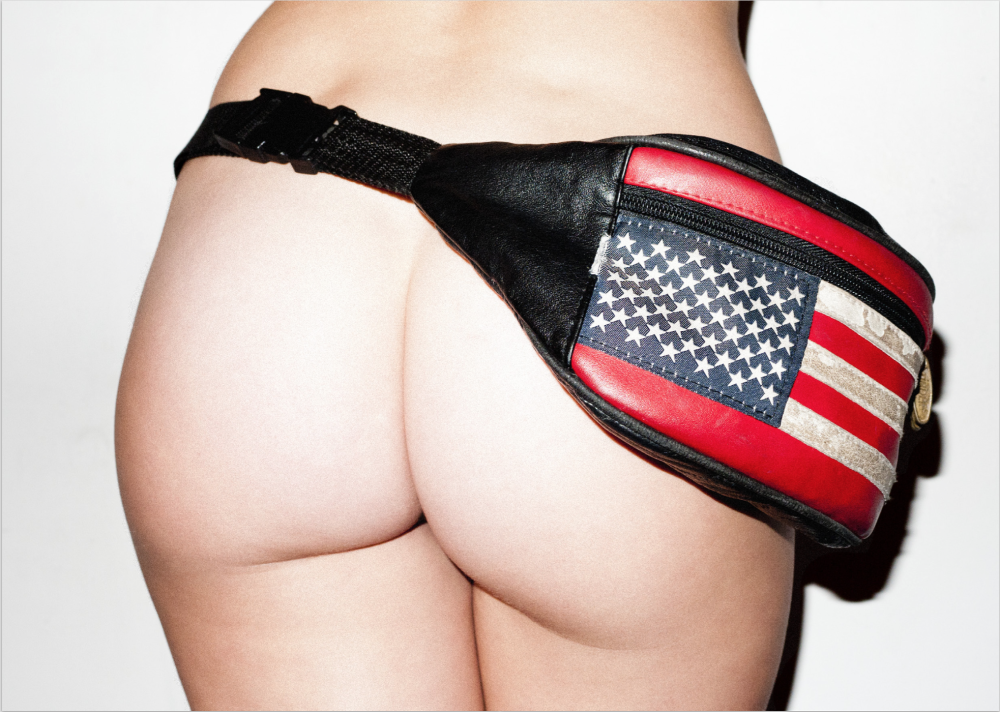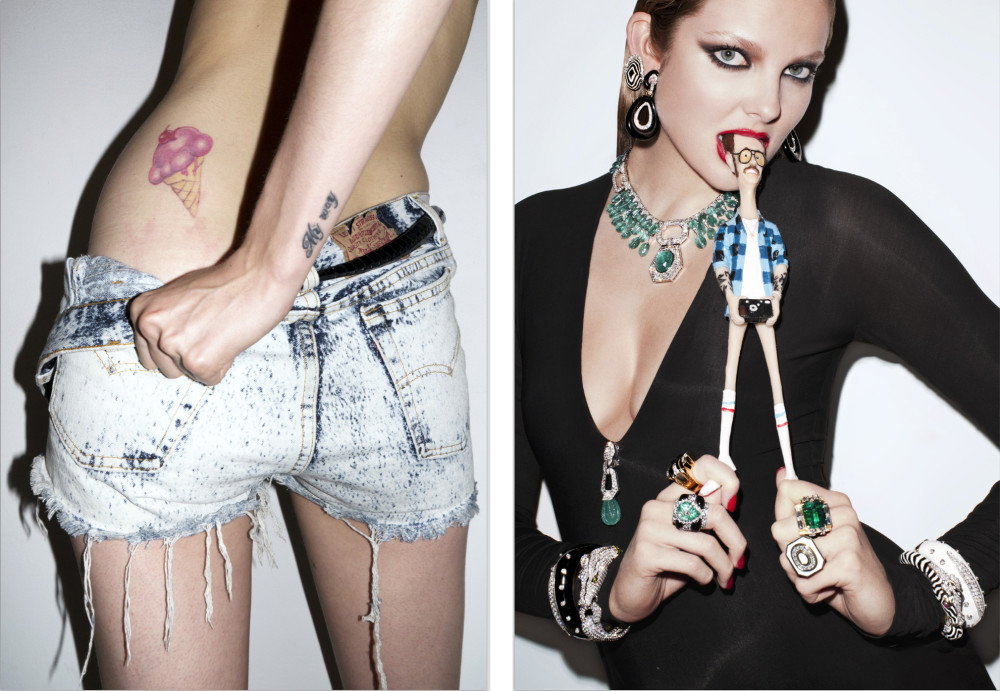Image above: Portrait by Vogue Hommes International: Terry.
MUSEE: To some people’s standards, you’ve had a very unconventional upbringing; a more alterna- tive kinship structure, to put it another way. How has this contributed to your affinity for the more provocative and risqué?
TERRY RICHARDSON: My parents were both creative people, and I was lucky to have been exposed to a lot of things at a young age that most people are not. I think this certainly gave me a more sophis- ticated palette because I was raised without a sense of artistic fear.
M: You’ve adopted the persona as a provocateur in the fashion and photography worlds. Is this a label you embrace or reject? Why?
TR: Mostly I just try to take the pictures that I want to take and if people want to label it that, then that is their prerogative.
 ©Terry Richardson, Lindsay Wixson.
©Terry Richardson, Lindsay Wixson.
M: You seem to have weathered the recent storm of criticism well. How would you respond to critics who deem your work to be excessively provocative?
TR: I try not to pay any attention to what people say, whether it be positive or negative, and just focus on my work.
M: One of my favorite advertisements of yours is the Tom Ford perfume ad. It embodies the idea of “sex sells.” You’ve pushed the envelope many times in advertising. Do you have a favorite client?
TR: I really love those ads as well. Tom is such a great person to work with because he really brings out the best in you. I find that he really trusted me to be spontaneous in that moment. That ad really works because everything was in sync in that moment. I find that most great images are the result of healthy collaboration, and he has always been one of my favorite partners in crime. I try to stay in the moment so whatever my current project is, it’s always my favorite.
M: You have photographed virtually every contemporary celebrity, from President Barack Obama to Lady Gaga to Oprah. Are there any anecdotes you could share with us?
TR: I never kiss and tell.
M: What do you consider to be the defining moment of your career? Which work are you most proud of?
TR: I think that in a fashion sense, booking my first Katharine Hamnett campaign was what really launched my career. That was another instance of a client who was really open to an exciting collabora- tion. Even today, I think those images hold up as seeming fresh and exciting. I’m also really proud of the Hysteric Glamour “Clown” book, which was the first book that I published.
M: You are noted for your sense of realism and your ability to capture a moment. How do you ap- proach different subjects, and how do you capture their personalities in your photographs?
TR: I just try to let people be themselves, and let whatever they are feeling in that moment come through. Once again, it is a collaborative and interactive effort, and an exchange of energy and emo- tion. My best subjects are always those people who are open to letting their freak flag fly.
M: What do you believe makes a good photographer?
TR: I don’t know, but certainly there are a lot of successful photographers who aren’t good photog- raphers, and a lot of unsuccessful ones who are. Ideally, it is someone who can communicate their unique ideas visually.
M: I have read that in order to make your subject comfortable when photographing them nude, you will take your clothing off as well. Do you find that helps?
TR: I once did a shoot with Kate Moss when we were both naked and that was hilarious, but now that I’m an old man I don’t think anyone would want to see me naked.
 ©Terry Richardson, Purple: Naked, Camille Rowe-Pourcheresse.
©Terry Richardson, Purple: Naked, Camille Rowe-Pourcheresse.
M: Would you consider yourself a good photographer? TR: Depends on the day.
M: Olivier Zahm, when I interviewed him recently, said that he considers you to be very professional. What do you say to this?
TR: He’s absolutely right. This is a job, and you have to be professional if you want to work and get things accomplished.
M: How did your signature style evolve? Did it come from a technical point of view or a stylistic point of view?
TR: It was really hard for me to focus, so I began working with a point and shoot, which did the focus- ing for me. I guess it came about first as a necessity and then evolved organically. I liked the aesthetic of the photos, kind of amateur snapshots, like the one in your family photo album with red eyes, ec- centric cropping, and happy accidents. People were also much more relaxed in front of the camera, they responded differently than if they were in front of a big, professional set up, which was awesome. It was much more human and spiritual.
M: How do you feel about many people now imitating your style?
TR: I think it’s funny that so many people complain that what I do isn’t “real” photography and then they turn around and do the exact same thing. I think if you can give someone the gift of inspiration, then that makes you a very lucky person.
M: How did you make the transition from photography to videography? How has your photography knowledge translated into your work with video? For you, are the two related or mutually exclusive?
TR: The moving image is an extension of still image. Today, everyone wants video content so you have to be able to do both. I really enjoy the process of shooting video, and I hope to make my own film one day.
M: The theme for this issue is “Vanity,” what comes to mind when you hear the word vanity? TR: Vanity Fair. M: You are featured in many of your own images. How did this artistic choice come about? TR: Modeling is good work if you can get it.
M: Similarly, you have many images that incorporate an impersonation of you, such as the images in which Chloë Sevigny is dressed as you, or the image of you being flanked by models wearing Terry masks. You also have multiple images in which the subject is wearing your signature glasses. Why are you compelled to incorporate yourself in some way in the image? Is this just good branding?
TR: I guess it was branding before that was a thing, now everyone wants to be IN the picture. I’ve been doing it for a long time without even thinking about it.
M: You have a lot of balls, no pun intended, to have photographed your own genitalia as extensively as you have. Is doing so an act of sexual liberation? Of artistic freedom? Or bragging rights?
TR: All of the above I suppose.
 ©Terry Richardson, Fanny Pack.
©Terry Richardson, Fanny Pack.
M: Is there something that would be too taboo and off limits for you to shoot?
TR: Not that I can think of, but there are probably some things that would be too mundane.
M: Many might consider you vain or egotistical. What would you say to this?
TR: Comes with the territory.
M: What is the back story behind your signature “thumbs up” pose?
TR: I’m working on a new one, that was my blue steel but I’m getting ready to release Magnum on you.
M: “The Sacred & the Profane” is your new exhibit opening at the Gallerie Perrotin in Paris. By the gallery’s own admission, this show is more toned down than some of your previous exhibitions. Why?
TR: Don’t worry, there’s still some surprises. M: In your press release for “The Sacred & The Profane”, you state that “America has a hysterical fear
of sexuality”. What effect has that had on your work?
TR: Luckily, not so much. I wasn’t really aware of it until I took this trip, and I realized that this senti- ment exists in a large part of the country that I have had very little interaction with until now.
M: What role, if any, did religion play in your attitudes towards sexuality? TR: Religion has never been a big part of my life, so most of my attitudes have been formed through experience not dogma.
M: What epiphany, if any, did you have on your road trip that made you change your original mission of documenting summer rituals, festivals and fairs?
TR: I became drawn more to these places and things than people. I realized what a weird and fucked up place America is, while still being great at the same time.
M: Why did you chose to exhibit this work in Paris?
TR:: Emmanuel Perrotin has always been a great person to work with. He asked me if I wanted to do another show in Paris, as we had done some together in the past. This is the body of work I created for the show.
M: What’s next for you? TR: I’m just finishing up editing a 20 year retrospective of my published work with Rizzoli which will be coming out next fall.
 ©Terry Richardson, (left) Purple Fashion: Best of the Season FW 2012; (right) Carine Roitfeld For David Webb.
©Terry Richardson, (left) Purple Fashion: Best of the Season FW 2012; (right) Carine Roitfeld For David Webb.
.

